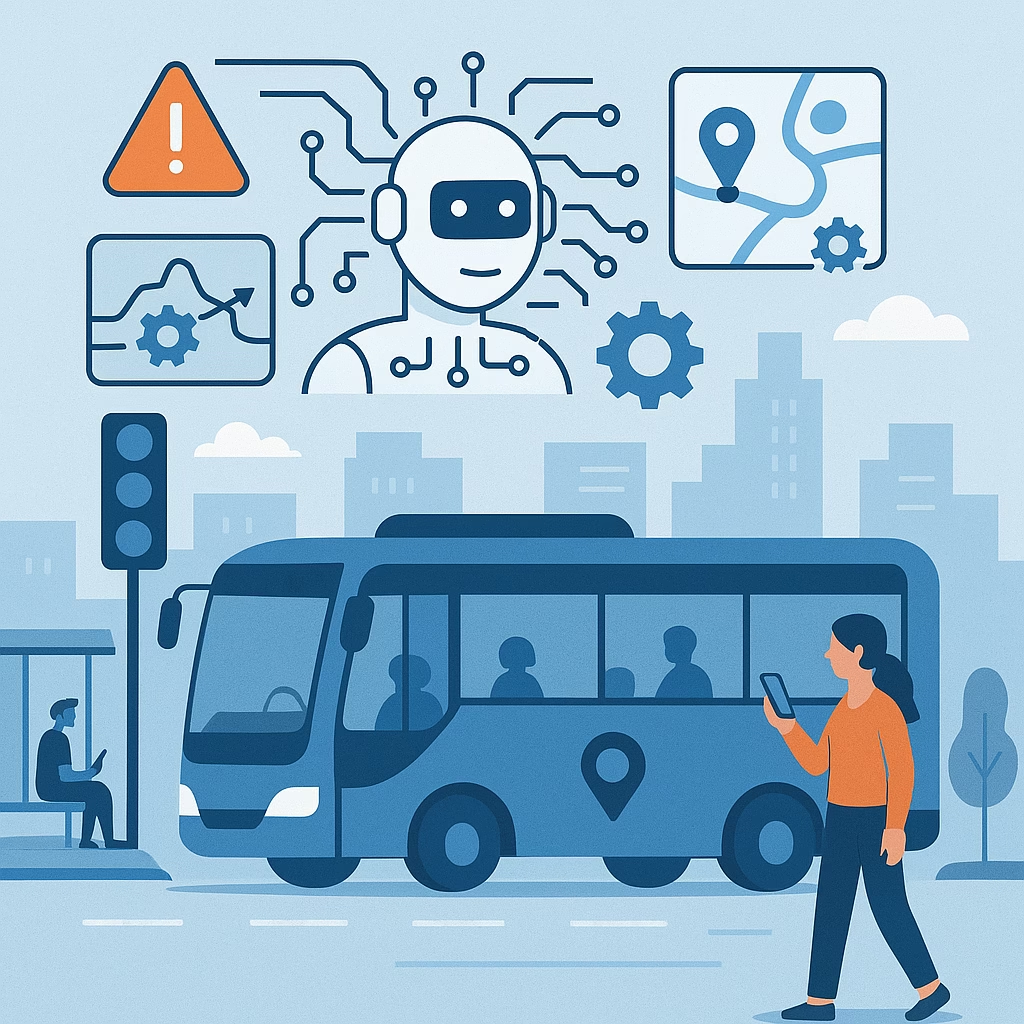Effective mass public transport systems are vital parts of any city, enabling people to conveniently access their places of work, education, and even leisure. Despite its immeasurable benefits, public transport services face major problems such as delays, insufficient facilities, traffic congestion, driving and management inefficiencies as well as poorly maintained infrastructure. Artificial Intelligence is seeking to address these problems by automating services and transforming public transportation which is now being customized to each passenger’s needs, making it user-friendly and personalized.
What AI Brings to the Table for Enhanced Public Transport Services

Everywhere you go, AI is being used to enhance the efficiency of service delivery. This emerging technology is certainly meeting expectations. It offers numerous opportunities to automate public transport and improve the experience of the user, leading to better satisfaction. Some of the most important applications of AI relative to public transport include the following:
- Optimizing Routes and Schedules
One of the major shortcomings of most transport systems is their inability to appreciate ‘real time’ demands. Known as a change in demand or an increase in the riders or commuters in a specific area, this dynamic change requires frequent revision of service objectives. AI technologies change that. They study commuter patterns, weather patterns, active accidents, and even traffic conditions to make autonomous decisions on ranging down routes and changing them as well as adjusting timetables to ensure mechanisms aimed at beating delays are put in place. Dynamic timetable management systems are very common these days and are implemented by transport companies like First Bus in Glasgow. After trying AI driven timetabling, they saw an 8.3% improvement in punctuality with AI having a positive effect on other performance indicators as well.
- Predictive Maintenance for Vehicles
When dealing with any form of automated public transportation, it’s very easy for unexpected breakdowns to be a real concern. Having AI powered predictive maintenance systems in place can combat that and allow users to rest easy knowing their AI enabled systems are utilizing sensors and active data streams to monitor numerous systems, components, structures, and other assets for any type of moving parts that pose a risk of developing some mechanical issue. That bouwen_predictive maintenance technology allows for.
- Traffic Flow Management
One of the most problematic areas for buses and streetcars is traffic congestion. An AI traffic management system has the capabilities of evaluating current traffic conditions and optimizing signal timings to enhance vehicular flow. This minimizes congestion, enhances fuel consumption, and ensures better travel conditions for commuters.
- Passenger Experience Improvement
Chatbots and mobile applications powered by AI offer passengers real-time information on arrival times, service interruptions, and route alterations enabling better journey planning. Moreover, AI-enabled booking systems permit payments to be made without physical interaction which minimizes queuing time and improves convenience.
The Future of AI in Public Transport

AI advancements is likely to result in the introduction of autonomous buses, AI crowd management solutions, and integration with smart cities, among other developments. There’s no question that the future of public transport will be centered around AI technologies and will further facilitate urban mobility in an efficient and sustainable manner.
Final Thoughts
The impact of AI on public transport is only the beginning, as it is set to change the operations of many cities. The application of AI technologies can help transit agencies improve services, lower operational costs, and construct a more environmentally friendly commuting system accessible to all.
Are you prepared for the AI-powered era of public transportation?

